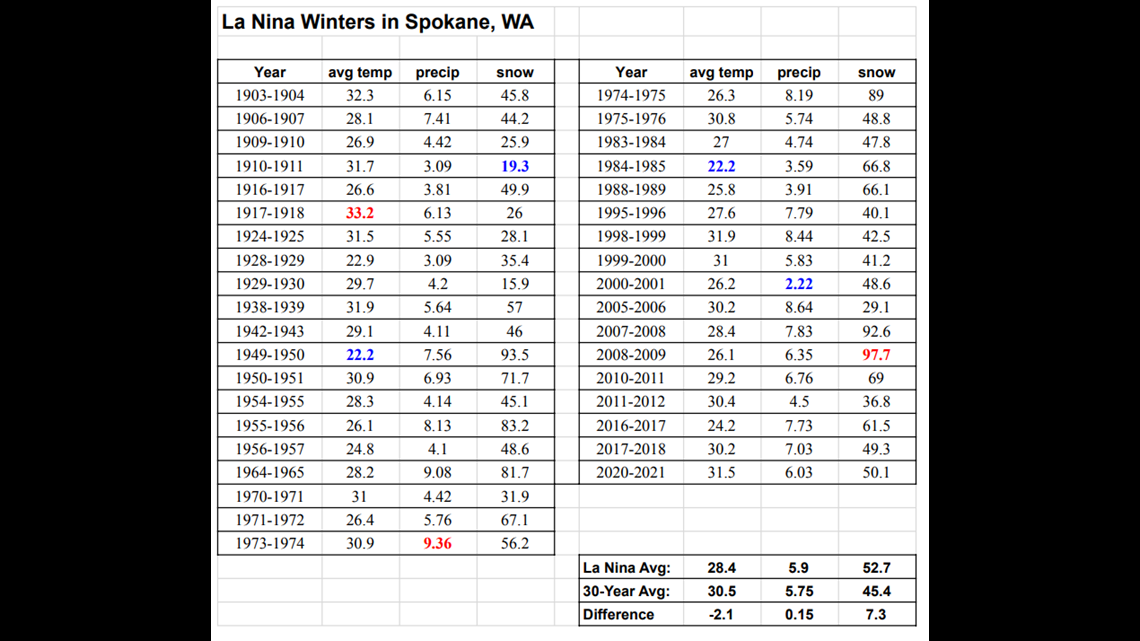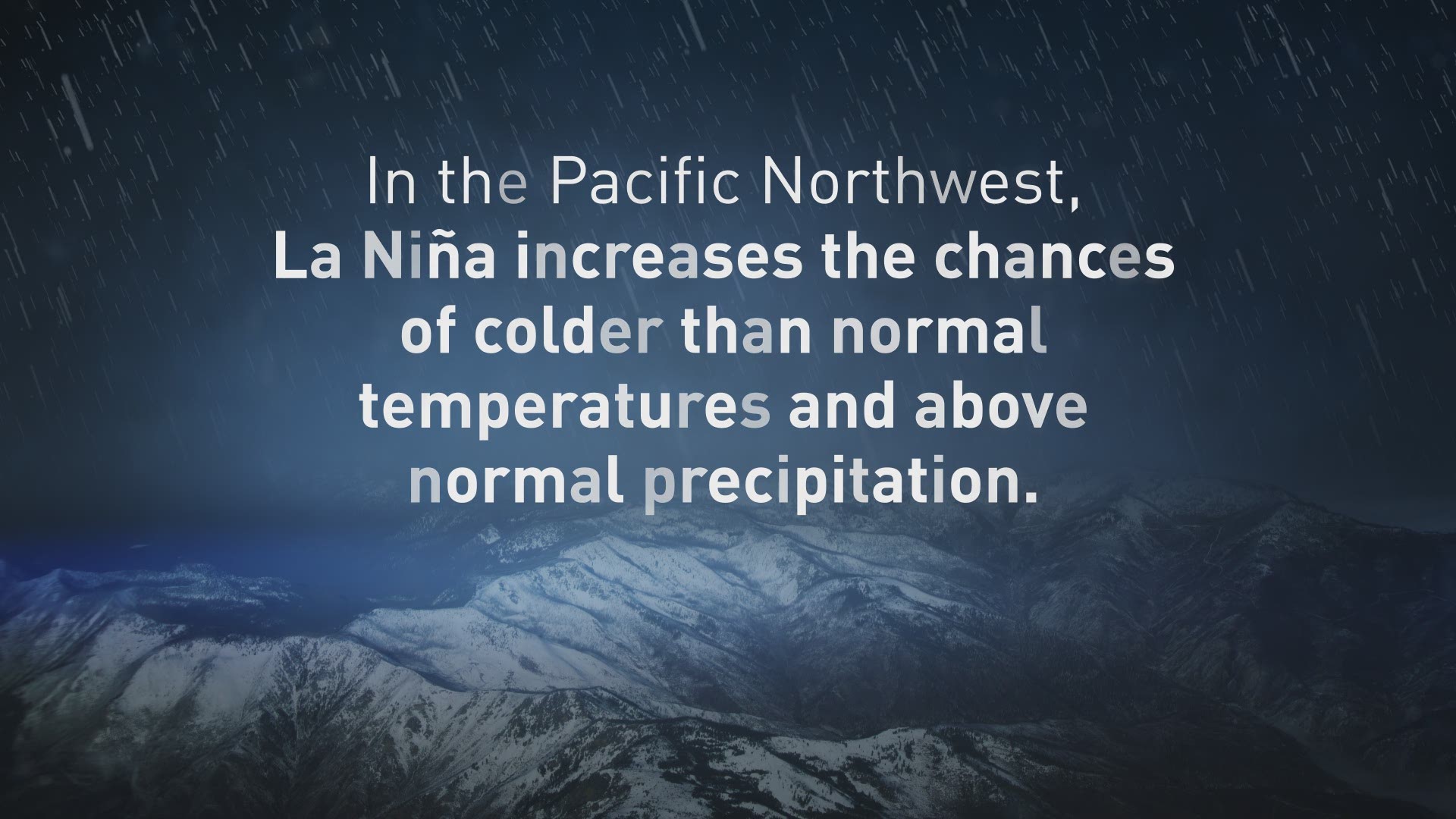SPOKANE, Wash. — With La Niña looking likely for the second straight winter, many people in Spokane and the Inland Northwest are already wondering if this year will be like last year or closer to the record breaking winter of 2008-2009.
La Niña's influence on the Pacific Northwest usually means a colder, wetter and snowier winter for the region. It's important to note that La Niña to winter weather isn't a perfect correlation, but we'll get these conditions more often than not.
Since La Niña and National Weather Service records began, there are 37 winters where La Niña conditions were observed. In Spokane, our winters follow the typical Pacific Northwest pattern for colder, wetter and snowier than average. Those winters had the following averages:
Average temperature of 28.4°, 2.1 degrees below overall average
Average precipitation of 5.9", 0.15 inches above overall average
Average snowfall of 52.7", 7.3" above overall average


The most noteworthy thing about La Niña winters in Spokane is that there is the high-end potential for snowy winters. The top three snowiest winters of all time were all La Niña winters. The most recent of those was the record-setting winter of 2008-2009 where 97.7 inches of snow fell that season. That came directly after the 2007-2008 season, which had 92.6 inches of snow. And 1949-1950 is the other in the top three, second with 93.5 inches of snow.
But last year, 2020-2021, wasn't nearly that snowy but we had our fair share of snow.
Despite no snow falling in March or April, we ended with 50 inches of snow for the entire season. Many people forget that we had an early and aggressive start to the season, with lots of October, November and December snowfall. January could've been snowier, but a warm stretch of weather caused a lot of rain to fall instead of snow. If temperatures would have supported snow, last year could have easily been a 70-to-80-inch snowfall season. But that's what made last year a bit of an anomaly: it was warmer than average.
La Niña's impact on winter weather isn't a perfect correlation. But seven out of every 10 times, we end up getting colder, wetter, and snowier than normal winters. So far, only La Niña winters have ever resulted in 90 inches of snow, double the normal amount of snow, in a single season.

